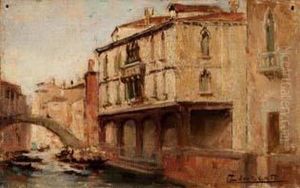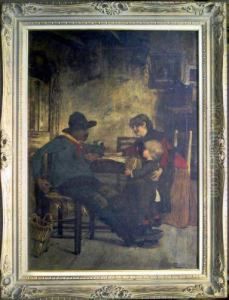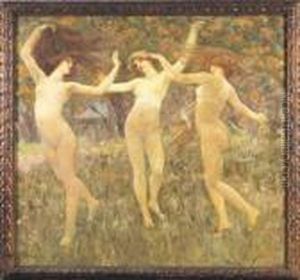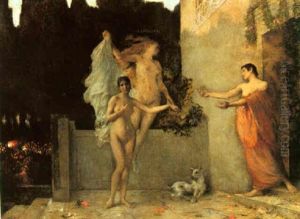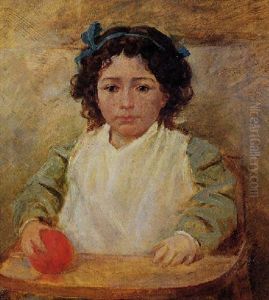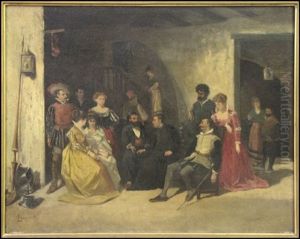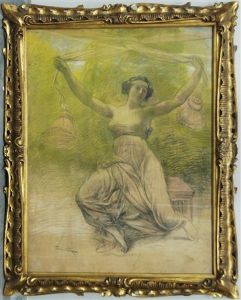Cesare Laurenti Paintings
Cesare Laurenti was an Italian painter and illustrator, born in 1854 in Sezze, then part of the Papal States. He is often associated with Symbolism, a movement that emerged in the late 19th century, emphasizing emotions, feelings, ideas, and the subjective interpretation of reality. Laurenti's work is characterized by its intricate detail, vibrant colors, and often mystical or allegorical themes, which reflect the Symbolist fascination with the dreamlike, the mysterious, and the esoteric.
Laurenti received his initial training at the Academy of Fine Arts in Rome, where he was influenced by the Nazarenes, a group of German Romantic painters who aimed to revive the spirituality and sincerity found in medieval art. His early career was marked by a series of religious and historical paintings, but he gradually shifted towards the Symbolist style, which allowed him greater freedom to explore his interest in the mystical and the arcane.
Throughout the 1880s and 1890s, Laurenti's work began to gain recognition for its distinctive blend of Symbolism and Decadentism, the latter being a movement that emphasized decay, exoticism, and the perverse. His paintings from this period often feature sinuous lines, ethereal figures, and a sense of eerie enchantment. One of his most notable works, 'The Veil of Maya' (1890), encapsulates the Symbolist preoccupation with unveiling the hidden truths of the universe through art.
Laurenti was also a prominent illustrator, contributing to various publications and books. His illustrations often carried the same Symbolist and Decadent qualities as his paintings, marked by a keen attention to detail and a flair for capturing the fantastical.
Despite his success, Cesare Laurenti remained a somewhat enigmatic figure in the art world, with his work often overshadowed by that of his contemporaries. However, in recent years, there has been a renewed interest in his oeuvre, with art historians and critics recognizing his unique contribution to the Symbolist movement.
Laurenti's later years were spent in relative obscurity, and he died in 1936 in Rome. Today, his work is appreciated for its beauty, complexity, and its ability to transport viewers to a world of mystical intrigue and poetic imagination. Cesare Laurenti remains an important, if underappreciated, figure in the history of Italian art, representing the intersection of Symbolism, Decadentism, and the broader European artistic movements of the late 19th and early 20th centuries.



